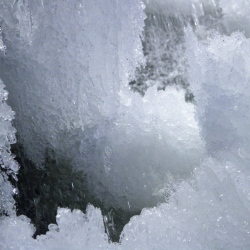
The rise and fall of acid rain is a global experiment whose results are preserved in the geologic record. By analyzing samples from the Greenland ice sheet, atmospheric scientists found clear evidence of the U.S. Clean Air Act. They also discovered a link between air acidity and how nitrogen is preserved in layers of snow.
Forty-five years ago, acid rain was killing fish and dissolving stone monuments on the East Coast. Air pollution rose beginning with the Industrial Revolution and started to improve when the U.S. Clean Air Act of 1970 required coal power plants and other polluters to scrub sulfur out of their smokestacks.
UW researchers began their study of ice cores interested in smog, not acid rain. They discovered a link between the two forms of pollution in the geologic record.
Nitrogen is emitted as a short-lived compound, NOx, which causes ground-level ozone, the main ingredient in smog, and relates to compounds that are the “detergent” of the atmosphere. Sources of NOx include smokestacks and vehicle tailpipes, as well as wildfires, soil microbes or reactions triggered by lightning strikes.
